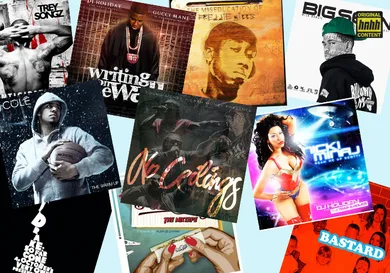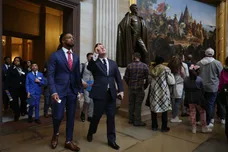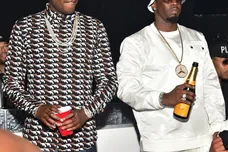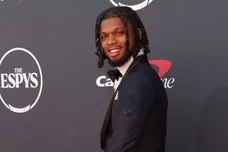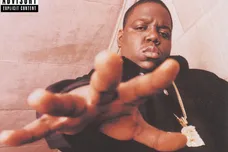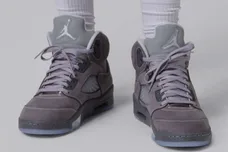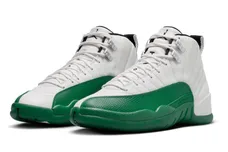For whatever reason, the year 2009 always stands out in my mind. There are a few different reasons as to why this is. First, perhaps the obvious: there were a lot of good mixtapes that dropped that year. The less obvious is that, that was a time when I was still young and free (read: in university) and not yet beholden to a job (one that was all about hip-hop, no less/little did I know). I perused blogs like any other obsessively invested hip-hop fan, wanting to hear the newest and latest, and wanting to hear it first. It was a time before streaming services became the normal way to consume music. It was an in-between era, with physical and digital both transitioning into something else, something new. "Digital" still consisted of downloading, purposefully clicking a button (or a few buttons, depending how deep your LimeWire file was hidden) and then collecting the songs on your computer, and transferring that collection over to your phone, or perhaps, some other sort of music-listening device that was du jour. It took time to download and transfer music. Therefore, I would dedicate time to it, collecting all the music I wanted that week, excited to sort through it all, with the hope of having a conversation with someone (anyone!) about it later.
A lot of these conversations, and the artists that dominated them, can be summed up via the list below. These top 10 mixtapes from the year 2009 helped defined that decade as well as influence our current decade's landscape and sound. These artists were all still fairly new in '09, and so at the time, these projects each showcased an artist that was exciting, fresh, and perhaps most importantly, filled with promise and potential. More than ten years later, we're able to see these elements fully realized.
These particular mixtapes also remain prominent points of discussion within each respective artist's catalog, indicating another reason they are deserving of a spot on this list. The ten mixtapes below are not only fan-favorites and discography stand-outs, they speak to the evolution of the rap game as a whole; as we've seen changes sparked directly by the artists included in the list below.
Take a minute to get nostalgic with us, and revisit these top 10 mixtapes from 2009 below.
Let us know what your favorite mixtape from the year 2009 is in the comment section.
Please note:
We've only included artist official mixtapes, therefore, you will not find Kid Cudi's unofficial mixtape release, Dat Kid from Cleveland although it was a memorable release from the year '09.
Honorable Mentions:
We want to give a special shout out to Dom Kennedy's FutureStreet/DrugSounds and Chip Tha Ripper's The Cleveland Show, although we weren't able to include them in the list, they are worthy 2009 mixtape entries.
Trey Songz - Anticipation
Trey Songz’s Anticipation mixtape could easily become a forgotten piece of history, as the r’n’b singer himself isn’t the most active when it comes to new releases these days.
His past, though littered with a string of steady mixtape and album releases, oftentimes gets overlooked in the grand discussion of mixtapes or the blog era in general. Lest we forget, Trey Songz came up around the same time as Drake, and truly cemented his fanbase in a way that has become more familiar to rappers than singers: free music. It worked for him, too.
Anticipation was released during the summer of ‘09. Songz had three albums already under his belt, yet his name recognition and following were still not entirely solid. Thus leading up to his third studio album, Ready, fans received two separate collections of songs in Anticipation and Genesis. The initiative worked too, as Ready became Trey Songz’s most commercially successful release to date, debuting at #3 on Billboard. This tactic was quite common around too-- the idea of releasing a free mixtape ahead of a commercial project, in order to amp up fans, as well as engage new fans, in the hopes they would follow the artist to their next release.
Songz would go on to release a total of 12 mixtapes, which surely sounds like a lot for any artist, let alone an r’n’b singer who wasn’t obligated to fill hip-hop trends. However it is exactly this idea that helped Trey gain so many fans and set him apart from the pack. During an era when r’n’b was sort of fading into the background and rap was coming to the foreground, Songz stuck himself into rap circles and became a necessary part of the discussion in the process. Anticipation showed off the artist’s sultry vocals, with moody, dark production-- in some instances his production could very well double for a Drake record too-- “Infidelity” is audibly similar to “Successful” with its haunting and forlorn production. Elsewhere songs like “Scratchin Me Up” showcased Trey Songz’s sense of drama, and ear for haunting melodies-- the unobvious type that somehow finds itself in the back of your mind three hours after you’re done listening to it.
- Rose
Big Sean - UKNOWBIGSEAN Vol. 2
Big Sean, perhaps in stark contrast to Tyler, The Creator, came up circa 2009 with the full support of the blogs-- he was a blog darling, if you will. A Kanye West co-sign didn’t hurt, complete with a story that most would-be rappers dream of: Ye was at the radio station where Sean worked in Chicago, and he asked to freestyle for the rapper. Kanye gave him 16 bars, but Sean wound up going for 10 minutes straight. Kanye was impressed.
That was in 2005. Two short years later he was signed to G.O.O.D Music and released his debut mixtape, Finally Famous Vol. 1, that would jumpstart his career. In 2009, Sean returned with the second instalment. Where artists like Tyler or Kid Cudi only have one proper mixtape under their belts, Big Sean really built most of his fanbase off the strength of his mixtape game.
Part of Sean’s charisma lies in his fun-having ability. The rapper was all about punchy, quick rhymes, and in the process, he’s been credit for popularizing the #hashtag flow, which was rampant at the time. His mixtapes were more traditional in the sense that he often rapped over popular instrumentals, but he also brought a few new records into the mix each time-- the fan-favorite hypebeast-riddled “Getcha Some” is one such UKNOWBIGSEAN Volume 2 cut. Big Sean’s rise up through the blog ranks was in tandem with fellow blog darling at the time, Mike Posner. While the two have seemingly diverged from their close working relationship, during this era, they had many collaborations together. “Smoke & Drive” was one of their most popular collabs though, a piano-laden banger that proved perfect for late-night cruising. There was something refreshing about Sean’s energy at the time, his charisma, and the fact that he didn’t seem to take himself too seriously on wax. UKNOWBIGSEAN Vol. 2 showcases a fragment of that, and makes for essential 2009 listening.
- Rose
Freddie Gibbs - The Miseducation Of Freddie Gibbs
Though not from Chicago, Freddie Gibbs’ proximity to the city -- being from Gary, IN -- has undoubtedly influenced every aspect of his rapping style. His rap flow varies. He can rhyme fast, slow, melodically. His work ethic and drive can be compared to a Michael Jordan or a Kanye West as he’s never allowed anyone else to determine his fate. That’s exactly why his current run is so impressive. He overcame label situations and shady music industry business to establish himself as one of the most successful independent rappers out right now.
Before he dropped Pinata or an Alfredo, even before he signed a deal with Jeezy, the drive and consistency in his mixtapes displayed hip-hop’s underdog at work. An album like The Miseducation Of Freddie Gibbs gave a glimpse of that, before unloading another project that same summer, Midwestgangstaboxframecadillacmuzik. Two years removed from a failed signing to Interscope records, and the rapper gave fans a double whammy of mixtapes. Midwest became an album that aligned Fred with his peers who were coming up off of the blogs. Transitioning from the grassroots hustle to an online presence. Gibbs has always affirmed that he isn’t like any of these other rappers. While that may be true, there’s something to be said about his ability to both out rap and trap his colleagues. With a bit of influence from all coasts -- the lyricism of the East, the thumping bass from out of the South, the Midwest twang, and all the California smoke -- Freddie Gibbs’ aptitude for rapping was met with the grittiness of the streets at a time when backpackers and gangsters were divided. Songs like “From Tha G” contrasted Gibbs’ gully description of the streets over soothing soul samples. “Queen (Luv U 2 Death)” was an eerie dedication to his mom in the midst of the hardships he faced and overcame. The rapper’s allegiance to Gary, Indiana has played a major role in what set him apart -- as he’d tell it, he’s the most prominent musician out of Gary since Michael Jackson.
Years later, Freddie Gibbs would reveal that he was still knee-deep in the streets while an album like Pinata was gaining critical acclaim. That’s probably why everything he rapped on prior projects, including The Miseducation Of Freddie Gibbs, felt so lucid. His hunger wasn’t just to be a great MC. His bars are informed by survival instinct, especially coming from a city like Gary that dealt with a harsh economic downfall since the decline of the steel industry. Ultimately, everything from unemployment rates to the city infrastructure suffered drastically, and to this day, is still trying to recover. Gibbs, too, was trying to overcome these obstacles throughout his life. It led him down a road where he attempted to balance the streets and the industry. Looking back on the first few tapes prior to 2009 gave a promising glimpse into the legacy that would be Freddie Gibbs. Though many doubted him, it’s The Miseducation Of Freddie Gibbs and Midwestgangstaboxframecadillacmuzik that displayed his fierce desire to overcome industry politics and personal obstacles.
- Aron
Tyler, The Creator - Bastard
Tyler, The Creator was making his first foray into rap music around 2009. While the internet has since opened up plenty of different avenues by which a new artist can access the industry, many of which are detached from major labels and the powers-that-be, around this time, the entry point for hip-hop listeners especially, was still very much relegated to blogs. Streaming services and platforms like Soundcloud were still in their infancy. Thus, for Tyler, a burgeoning rapper based in the West Coast, it would have been important to receive a blog co-sign-- and it would have allowed him access to more ears-- but it proved difficult for the rapper. For whatever reason, it seemed like 2DopeBoyz, among other blogs within that same circle, were refusing to share Tyler’s buzzing music-- and so he lashed out to them on wax, in the opening of his debut mixtape/project, Bastard: “Yo, fuck 2DopeBoyz and fuck Naw Right / And any other fuck-nigga-ass blog that can't put an 18 year old nigga / Making his own fucking beats, covers, videos and all that shit / Fuck you post-Drake-ass cliche-jerking, LA-slauson rapping / Fuck-nigga-ass Hypebeast niggas, now back to the album.”
In the sense that Tyler forwent the usual blog route during this era, he was ahead of his time. These days, you need not have a blog co-sign to secure fans or validate your artistry. Tyler proved this early on, going on to build a very successful and sustainable career without much blog support.
The music on Bastard offers you a snapshot in time, thanks to Tyler’s penchant for timely pop culture references-- most of which he turned on their heads, going against any trends du jour, or else, framing them in a sarcastic manner.
The project also serves as an important marker within the evolution of Tyler’s music and career, as we’ve come to see. Bastard’s sound and style stands in stark contrast to a project like IGOR or Flower Boy, but that is not to the detriment of either project, rather, it simply highlights Tyler’s talents and his desire to grow. Tyler is no longer an 18-year old kid trying to figure himself out, and shock fans with his lyrics in the process-- he’s a grown man, who has finally accepted who he is, and what’s more, openly shared that person with the world.
- Rose
Gucci Mane - Writing On The Wall
Weaving in and out of prison with verified street credibility that’s been documented via both local news outlets and the biggest blogs, Gucci Mane’s history as a figure in rap can be summed up by his mixtape run. Even while behind bars, Gucci Mane rattled through the streets of Atlanta and beyond with one of the most prolific runs that the rap game has ever seen. He maintained his relevancy with a surplus of music that he’d unload while the streets immortalized #FreeGucci hashtags on shirts, tweets, and anywhere else where that statement can be visibly seen.
An era where Gucci Mane’s addiction to cough syrup ironically made him sound like he was perpetually sick, Writing On The Wall opens up with Gucci Mane’s nasally voice pleasantly welcoming the listeners to his new mixtape with DJ Holiday. It doesn’t take long for the sounds of machine guns to kick off the havoc of Gucci’s world riddled with legal woes. “Gucci got a warrant, how the fuck I get subpoenaed?/ Objection, what’s the objection?/ Your honor I’m a genius.” Gucci addresses his upward battle against the justice system off the rip on “Hurry.” There’s invincibility in his tone on each track of the project. His paranoia inadvertently peaks out through bars detailing the streets.
Arriving just as songs like “Bricks” were taking over the club, Gucci Mane’s Writing On The Wall produced so many potent hits and quotable bars that would live on a decade later. “Wasted” became a massive anthem for the clubs while “First Day Out” spoke to trappers across the globe. “I’m startin’ off my day with a blunt of Purpp/ No pancakes, just a cup of syrup,” remains one of Gucci’s most iconic bars to date. And even with a tracklist that featured heavy hitters from budding stars like Nicki Minaj and 2 Chainz, to more established names, like Busta Rhymes and Juelz Santana, Gucci Mane’s authenticity and raw energy of the streets was still the most captivating aspect of this project.
- Aron
Nicki Minaj - Beam Me Up Scotty
The comic book-inspired cover art of Nicki Minaj’s Beam Me Up Scotty portrays a young Queens rapper donning a Superwoman-inspired outfit in front of beaming UFOs. Nicki’s breakout mixtape was a dip into the Pink Friday world. Lil Wayne and Gucci Mane, who were arguably in peak of their game around those years, had already peeped the potential. Nicki became the most promising bet for the next leading female in rap. Beam Me Up Scotty presented that cohesively. Nick’s pen, regardless of public opinion on her personal life, has stayed strong throughout the years. But as a female in a predominantly male game, her hunger was twice as high and that came out when she’d have to swap bars with the greats. Nicki demolished tracks, even as she stood next to the majority male-dominated Young Money roster as well as Gucci’s 1017 affiliates, with a penchant for punchlines and metaphors while contorting her vocals to take on different personalities.
A product of New York, with ties to Atlanta and backed by New Orleans’ powerhouse of the Young Money/Cash Money conglomerate, Nicki Minaj was in her rawest, and arguably, most compelling form. Nicki was able to dibble and dabble in regional pockets of hip-hop comfortably. She dove face-first into the bandos of Atlanta on “Easy” with Gucci and Rocko then took it to Magic City on “Girls Kissing Girls.” “Itty Bitty Piggy” had Nicki taking on nursery rhymes, flipping them and bringing quintessential New Yorkisms while dunking on “bum bitches.” Though basic in structure, she uses it as a tool to antagonize her competitors and peers with a playful touch. The difference is, at the time, she actually had something much more to prove beyond just her haters. This attitude has continued throughout her career. Ultimately, it’s these moments that paved the way for her to have one of the best verses on Kanye’s My Beautiful Dark Twisted Fantasy, not to mention, be the opening voice on the album. Even as much as she was able to outrap her peers, she delivered radio-friendly hooks on songs like “I Feel Free” ft. Ron Browz, Red Cafe, and Ricki Blaze, that sound like they’d still get some spin today, even if it’s in your local Gold’s Gym.
DJ Holiday declared it Holiday Season as he does on every mixtape but on Beam Me Up Scotty, he made history as he really helped usher in a once-in-a-generation artist.
- Aron
Wiz Khalifa & Curren$y - How Fly
The two smokers who transformed their habit into it a mainstream hobby. Of course, weed has been a side piece to hip-hop music for awhile now, but Spitta and Wiz managed to make it our main b*tch, and influenced an entire generation of artists to follow suit. The two independent rappers on their grind joined forces on the collaborative effort How Fly, at a time when joint projects were fewer and far between, thus making this one all the more special.
While it’s become commonplace for one rapper to team up with another rapper-friend and drop a list of songs for fans, it also seems to be less about fostering a unique musical relationship and more about the streaming numbers. However with Curren$y and Wiz Khalifa, it was genuine, and that was reflected throughout How Fly. The two bounced off each other easily, making the entire free-flowing mixtape feel like it happened during a bro-on-bro camping trip (for some reason this feels like an apt description of how Wiz and Curren$y might have locked in, lake in view, campfire, Birkenstocks and all). Production from Taylor Gang OGs like Sledgren ensured a laid-back, leisurely musical journey for the listener to accompany their spliff, filled with spots of soul and funk.
How Fly is not only important as a reference in the golden blog era and a marker in Curren$y and Wiz Khalifa’s respective careers, but equally, it’s important from a business model perspective, in the sense that, Wiz and Spitta were taking a risk-- again ahead of their time in both going the independent route-- and attempting to build a fanbase predominantly through online means, and what’s more, mostly through the release of free (!) music. Lots of it. Both of the artists had previous experiences with the major label industry early on in their careers-- Wiz with Warner Bros and Curren$y with Young Money-- thus influencing their decisions to stay (or perhaps, go) independent. If it weren’t for these two artists leading the way back in 2009, who knows what the independent and online rap landscape would look like today.
- Rose
Lil Wayne - No Ceilings
Wayne is known for his mixtape discography, which is stacked to be sure. While many mixtapes have stood out during his prolific mixtape run, one of his crowning jewels remains No Ceilings in 2009, which signaled a return to form of sorts for the rapper.
“A return to form” might not be entirely accurate, actually. He hadn’t really fallen off at the time. Perhaps it was simply a “reminder of form.” A year prior he had released Tha Carter III, one of his best instalments in the series. Wayne was in peak performance mode during this era, although he was nearing what some may call a fall-off stage, post-No Ceilings, with the mixtape leading into Rebirth and I Am Not A Human Being respectively. This particular factor may be of key importance as well, in understanding why No Ceilings is held in high such regard-- it became one of Wayne’s best-slash-last releases during this era, the ideas going hand-in-hand.
No Ceilings then, displayed all of the reasons why we loved Wayne to begin with, and that is why it sits close to our hearts. Again this harkens back to the idea that the project served more as a “reminder of form” than a return to one.
He once again monopolized and eclipsed other people’s records, with his personal take on records like “Swag Surf,” “Ice Cream,” “Banned from T.V.,” “I Got No Ceilings” and basically every other song on the tape. He littered the mixtape with highly quotable lyrics, exemplifying his talent for short catchy bars and strange metaphors. His flows were sharp, clear, and easy-- whether the production was the hard-hitting, electrifying guitar of Jay-Z’s “D.O.A.,” the pop-fueled Black Eyed Peas’ “I Got A Feeling” or Beyonce’s energizing “Sweet Dreams,” he proved that no beat is too difficult to find the pocket of. While we don’t know what went into the decision-making process in terms of the beats he opted for, it’s clear that Wayne has a keen ear for the type of energy he wants to maintain, and he did it with aplomb across No Ceilings-- over the course of 21 records, there is no need to slow down or skip, as the energy levels are even through out. That says a lot, considering the momentum that begins straight out of the gate with the unrelenting “Swag Surf.” Wayne goes in, and he simply does not stop.
- Rose
J. Cole - The Warm Up
Hindsight can be fun, especially when some of the greatest lyricists of all time are involved in the conversation. In 2009, J. Cole was only on his second mixtape. His first, The Come Up, provided an interesting introduction to the North Carolina rapper. On The Warm Up, however, Cole found himself performing to a wider audience. An audience that ultimately included Jay-Z, who found himself willing to bet on Cole thanks to the breakout single “Lights Please.” Considering that Jay-Z had long cemented himself as one of rap’s greats by that point, his co-sign was about as powerful as Cole could receive; instant validation that the young emcee was one to watch.
It’s important to recognize that the landscape was in an interesting place -- Nas had only recently penned hip-hop’s eulogy, with Jay-Z’s own “Death Of Autotune” lingering as a powerful cultural warning shot. For an artist like J. Cole, whose success required that his audience remain invested in his message, a lyrically focused project like The Warm Up was somewhat of a gamble. Especially given Cole’s emphasis on narrative-driven compositions. Yet amidst the self-produced tracks and classic instrumentals, it quickly became clear that Cole himself was the standout presence. For many, a new champion had arisen, one who understood the significance -- and the power-- of the written word. Though Cole was still evolving as an artist, The Warm Up managed to stay compelling throughout, and played a major role in ensuring that his debut album landed with momentum.
- Mitch
Drake - So Far Gone
Drake’s So Far Gone is perhaps one of the best projects to truly encapsulate “2009.” That is because it offered us a glimpse at where hip-hop music would go, while still remaining grounded in previous hip-hop traditions. Not only that, but as we all know, it became Drake’s defining project and his launching pad for super-stardom. Drake experienced many ‘firsts’ during this transitory era from physical to digital, from IRL to online, which have come to define our current landscape. Drake was the first ever unsigned Canadian rapper to be played on BET (!) with “Replacement Girl,” his collaboration with Trey Songz from his mixtape 2006 Room for Improvement. His 2009 project would spawn singles in “Successful” and “Best I Ever Had,” with the latter peaking at #2 on the Billboard Hot 100, again, at a time when mixtapes were still downloaded rather than streamed, and Drizzy was still independent. Nowadays, an independent artist managing these feats is commonplace.
So Far Gone, insofar as it blended two eras of hip-hop, contained a mix of new records (“Houstatlantavegas,” “Successful,” “Best I Ever Had”), freestyles over instrumentals from popular artists (Kanye West’s “Say You Will,” Jay-Z’s “Ignorant Shit”) and fresh remixes with indie/cult artists (“Little Bit” with Lykke Li, “Unstoppable” with Santigold and Lil Wayne). The scope of this indicates that Drake was creating a new template, while also recycling the template of mixtapes of old. The range of artists and instrumentals also speaks to this idea of blurred lines. Drake was looking for fans not only from the mainstream rap area, but from the bubbling underground and alternative scenes alike.
This idea was furthered by the Toronto native’s artful blending of two styles: r’n’b and rap. The resulting sound is something sleek yet muddied, slow yet energized. The rapper took key influences from his dad’s native Texas to the booth with him, as encompassed perfectly in “Houstatlantavegas,” with it’s production that feels as though it’s chopped and screwed. While the beat sounds southern, Drake’s vocals are airy and melodic, and he sings as though there is a barrier between his voice and the beat, gliding rather than touching down. “November 18th” showcases this again, that down-south, drawn out sound taking over the production-- this time even including a legitimately chopped and screwed hook-- while Drake flows quietly, as though he’s serenading his lady directly.
The avant-garde nature of So Far Gone doesn’t stop at the structure and style of the mixtape. Another factor that made Drake such an anomaly at the time, was the way in which he discussed women on wax, and his personal interactions with said women. Drake said in an interview, “I try to have as many of those lines as possible so that fans feel like Drake isn't only one of my favorite artists, I feel like he's one of my friends, he talks to me. That's one of the benefits of being honest with your music.” The result is something deeply personal but widely applicable, and it’s become Drake’s calling card: the relatable, average man’s depiction of relationships with women. Although, these days he may no longer be “average,” he still carries this sense of relatability that has drawn fans to him from around the world.
- Rose
